Chuyangsa Shrine (추양사)
14.3 Km 0 2024-01-15
25 Jisan 5-gil, Seobu-myeon, Hongseong-gun, Chungcheongnam-do
Chuhyangsa Shrine is located in Hongseong-gun, Chungcheongnam-do, and is dedicated to Kim Bokhan, also known as Jisan. The site holds memorial rites every year for the followers and descendents of Kim Bokhan.
Hongseong Jeongamsa Temple (정암사 (홍성))
14.5 Km 8355 2021-03-12
652, Oseo-gil, Hongseong-gun, Chungcheongnam-do
+82-41-641-0488
Jeongamsa Temple is a small rural temple situated halfway up Oseosan Mountain. There are few existing records that mention the temple’s beginning. Some suggest that it was built around AD 527 during the 5th year of Baekje King Seongwang’s reign, but there is little evidence to support this theory. The only reference alluding to a specific time is Yeojidoseo ("Detailed Survey of Korean Geography" published during the late Joseon dynasty). It states Jeongamsa Temple's location as on Oseosan Mountain, and Oseosan Mountain being surrounded by Hongsan Mountain and Baegwolsan Mountain and intersected by Hongju, Gyeolseong, and Boryeong. This indicates the temple was recognized in the mid-18th century and around the same time, Garamgo (a book about temples, published in the late 18th century) also states that Jeongamsa Temple is located approximately 11 kilometers to the east of Gyeolseonghyeon. It is still uncertain whether the temple referred to is Jeongamsa Temple on Oseosan Mountain.
Some foundation stones within the temple site measure 70-80 centimeters on each side. These stones indicate that the old Buddhist shrine of Jeongamsa Temple was laid out with five kan (Korean unit of measurement indicating the space between two pilars) at the front and three kan on the side. Future archaeological studies will help identify the true history of Jeongamsa Temple.
Yanggoksa Shrine (양곡사)
15.1 Km 0 2024-01-16
131-31 Hongnamseo-ro, Seobu-myeon, Hongseong-gun, Chungcheongnam-do
Yanggoksa Shrine is located in Yanggok-ri, Hongseong, and enshrines the memorial tablets of Han Won-jin, and his disciples Song Neung-sang, and Kim Han-rok. The shrine was built in 1772 to commemorate Han Won-jin, and then was later rebuilt in 1987 with the addition of Song Neung-sang and Kim Han-rok's memorial tablets.
Haemieupseong Walled Town (서산 해미읍성)
15.9 Km 25132 2021-08-18
143, Nammun 2-ro, Seosan-si, Chungcheongnam-do
+82-41-661-8005
Haemieupseong Walled Town is a representative fortress from the Joseon period. Additional famous walled towns in Korea include Gochangeupseong Walled Town and Naganeupseong Walled Town. Haemieupseong Walled Town was established in 1491 during the 22nd year of King Seongjong. Its perimeter is approximately 1.8 kilometers, the x_height is 5 meters, and total area is 196,381 m², making it a huge fortress. Through restoration and purification projects, its old image has been restored as a historic park and it is famous as a site of Catholic martyrs' in the late Joseon era.
During the persecution of Catholics, many Catholics from Chungcheong-do were forced to come to Haemieupseong Walled Town where the administration office was located. Upon arrival, they were tortured to death. In particular, approximately 1,000 people are recorded as having been executed during the persecution in 1866.
The plaza inside of the fortress has a prison site where Catholics were chained up under the Daewongun government, and a gigantic old tree which was the tree used for torturing. The stones which were used for thrashing are located outside of a fortress gate and have become a holy place.
Seosan Haemieupseong Festival (서산해미읍성축제)
15.9 Km 21899 2024-06-05
143 Nammun 2-ro, Seosan-si, Chungcheongnam-do
+82-41-660-2697
Seosan Haemieupseong Festival is held every October at Haemieupseong Walled Town, a fortress with over 600 years of history. Various events and programs are offered including an overnight program in front of the fortress. Exciting performances such as a reenactment parade, traditional music performances, and fireworks are also planned.
Oseosan National Recreational Forest (국립 오서산자연휴양림)
16.5 Km 11305 2022-07-22
531, Oseosan-gil, Boryeong-si, Chungcheongnam-do
+82-41-936-5465
Oseosan National Recreational Forest was opened on September 22, 2001 around Myeongdaegyegok Valley in Boryeong-si, Chungcheongnam-do. The area is separated from the city area, making it perfect for peaceful retreats into nature. There is a training center and many walking paths through the forest. The trail leading to the summit of Oseosan Mountain is popular among families and couples for its view of the sunset.
Haemi Martyrdom Holy Ground (Yeosutgol) (해미순교성지(여숫골))
16.5 Km 24160 2020-03-06
13, Seongji 1-ro, Seosan-si, Chungcheongnam-do
+82-41-688-3183
Haemi Martyrdom Holy Ground is the site where nearly 1,000 Catholics
in Chungcheongnam-do were buried alive during the time between the Byeongin Persecution in 1866 and 1882. At that time, Catholics were executed outside Haemieupseong Fortress' Seomun Gate (West Gate). As it was difficult to execute them one by one, the martyrs were buried alive in a big hole all at once. When confronted with their deaths, the martyrs prayed while singing 'Yesumaria' (Jesus Maria). Because it also sounds like "Yeosumeori", the place was called 'Yeosutgol' as well.
The 16-meter-high memorial tower was set set up near Haemicheon Stream to pay tribute to the nameless martyrs who were buried alive. Many Catholics visit this location every year to remember and honor the martyrs who sacrificed their lives for their belief.
Seosan Gaesimsa Temple (개심사(서산))
17.3 Km 49163 2021-09-18
321-86, Gaesimsa-ro, Seosan-si, Chungcheongnam-do
+82-41-688-2256
Situated in a dense forest in Sangwangsan Mountain and 6 kilometers away from Haemi-myeon, Gaesimsa Temple is one of the four major temples in Chungcheongnam-do. The path from the parking lot to the temple site is quite remote and curved, but beautiful especially in spring when cherry blossoms are in full bloom.
The temple was built in 1484 during the 15th year of King Seongjong and designated as a Treasure. The architecture of the temple stands out, as the buildings use bent tree trunks for pillars.
Yonghyeon National Recreational Forest (국립 용현자연휴양림)
17.4 Km 29151 2020-08-26
339, Maaesamjonbul-gil, Seosan-si, Chungcheongnam-do
+82-41-664-1978
Yonghyeon National Recreational Forest is situated in the heart of Yonghyeon Valley between the ridges of Gayasan Mountain around Seongmunbong Peak (alt. 678 m). The forest boasts splendid natural landscape. A hiking trail and loop trail through the forest are established along the ridges of the mountain and connect to the road leading to Seosan Farm, so hiking and walking are convenient and one can get a great view of the Yellow Sea in the distance. The valley waters are particularly clean and clear, and the forest features dense groves of oak trees. There are group accommodation facilities and forest education classes. For an educational and cultural excursion, visitors can also learn about the later Baekje period in a nearby education facility.
Cheongyang Daracgol Julmudeom Holy Site (청양 다락골 줄무덤 성지)
17.7 Km 8051 2020-06-25
78-6, Darakgol-gil, Cheongyang-gun, Chungcheongnam-do
+82-41-943-8123
Julmudeom refers to the unmarked graves of anonymous Catholic martyrs in Darakgol, Cheongyang in Chungcheongnam-do. Darakgol is also the birthplace of St. Choi Gyeong-hwan and Choi Yang-eop (the second Catholic priest in Korea) was also martyred in Gwacheon, Gyeonggi-do. Because the grave is of more than one individual, it was given the name Julmudeom (group graveyard).
Although the exact number of martyrs and their exact cause of death is unknown, they were buried by family resulting in the 37 mounds in three sections. In 1982, Cheongyang Cathedral established monuments to commemorate the unidentified martyrs, and Julmudeom became a well-known site for Catholic pilgrimages. In 1986, the remains of St. Choi Gyeong-hwan Francisco were relocated to the Jeoldusan Martyrs’ Shrine reducing the total number of mounds at Julmudeom to 36.
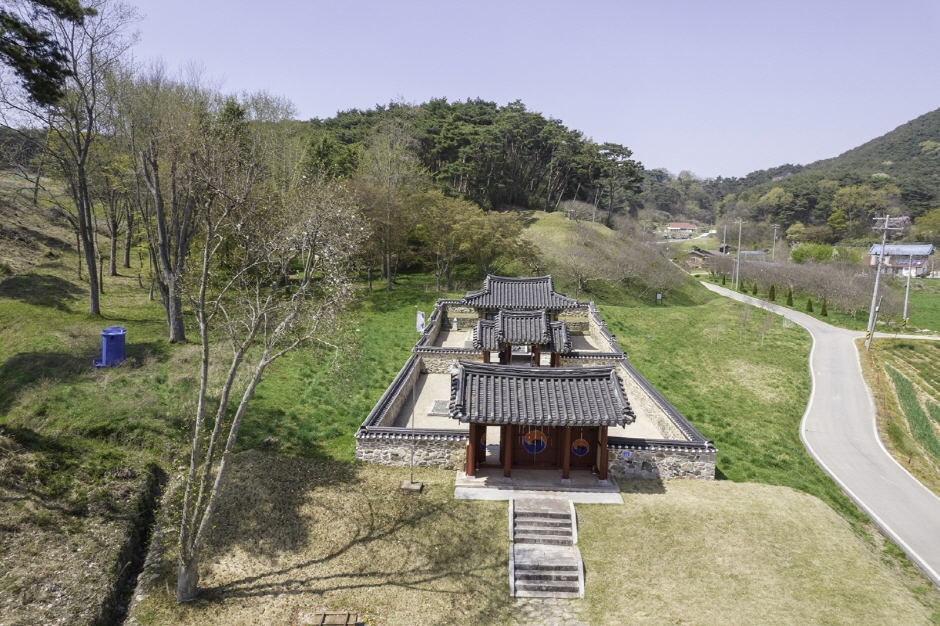

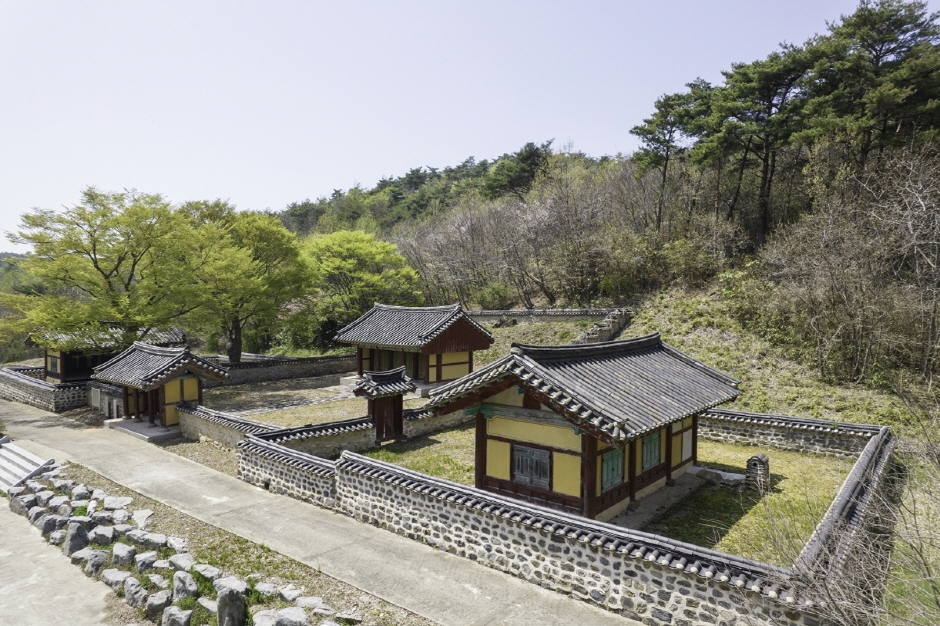
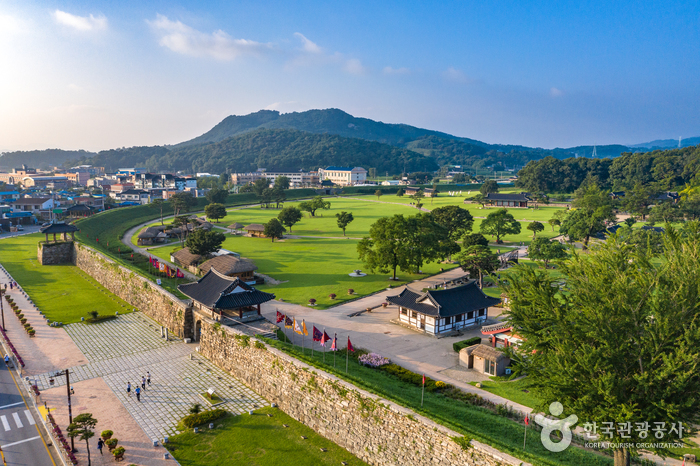
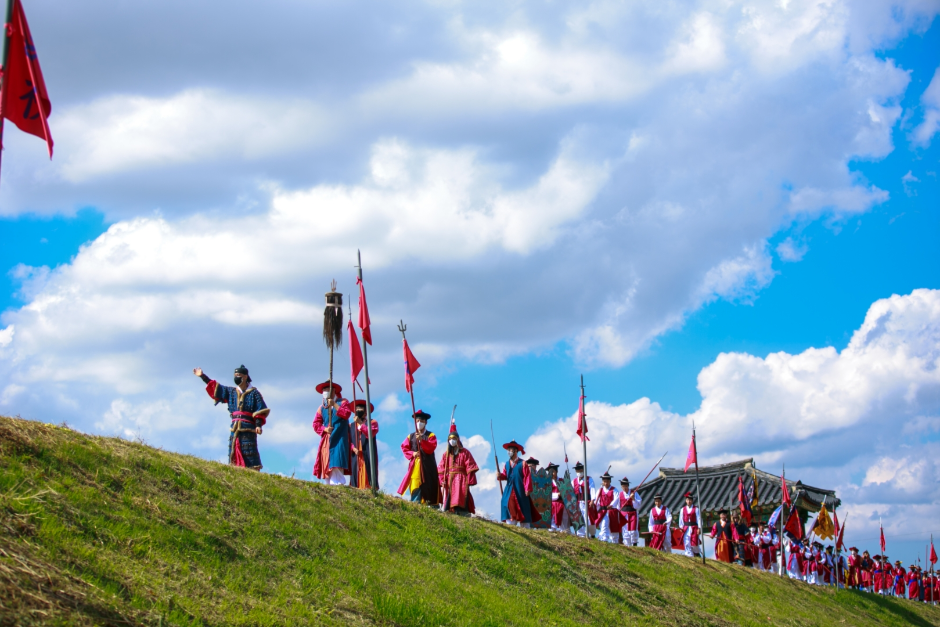
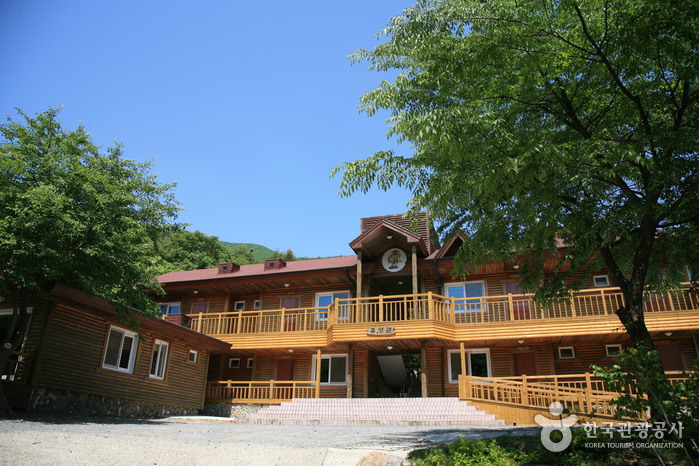

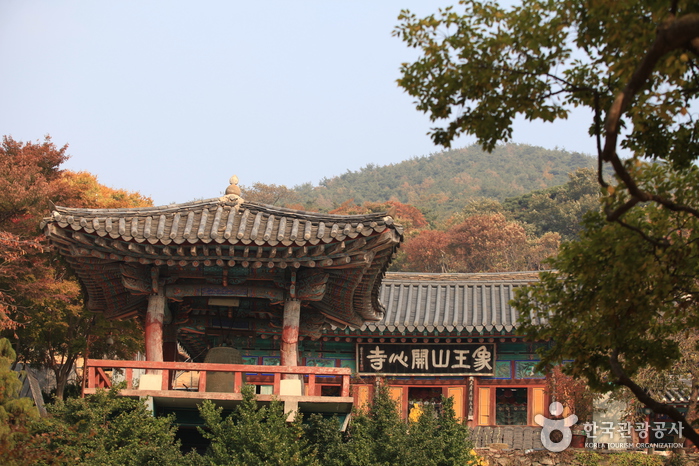
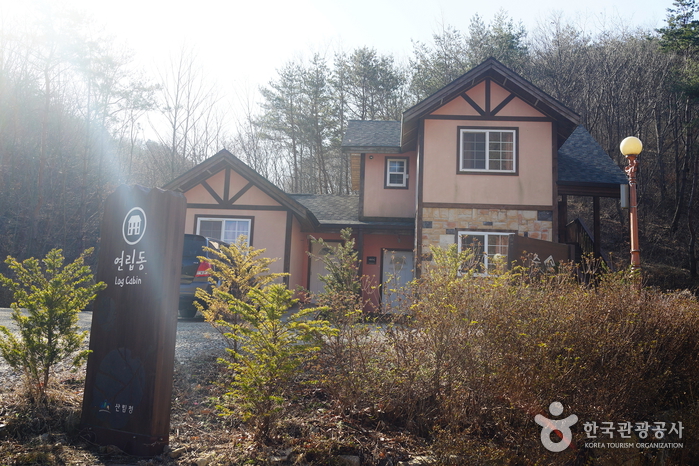
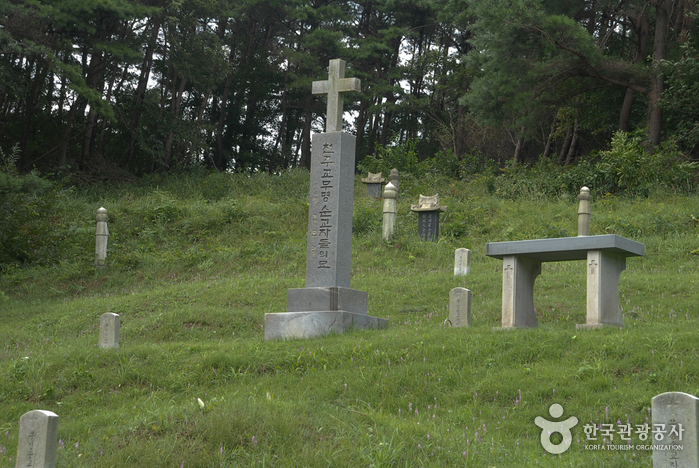
 English
English
 한국어
한국어 日本語
日本語 中文(简体)
中文(简体) Deutsch
Deutsch Français
Français Español
Español Русский
Русский